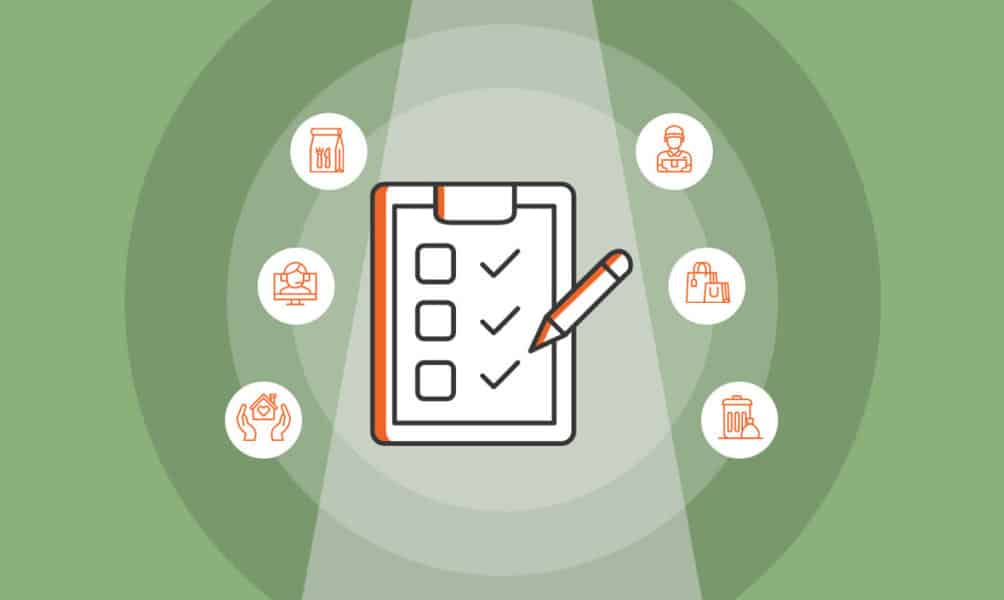Procurement has shifted from an administrative task to a strategic function that drives efficiency and value. With a third of businesses citing supply chain disruptions and inflation as major risks, Managed Procurement Services are gaining traction for streamlining sourcing and supplier management. Effective procurement now focuses on creating value, managing risks, and fostering innovation.
Understanding Managed Procurement Services enables businesses to leverage them for cost savings, risk management, and operational efficiency. Partnering with specialized providers allows companies to optimize procurement processes and focus on core competencies. This shift enhances procurement operations and positions businesses for strategic growth in a competitive market.
Sustainable procurement is becoming critical for businesses looking to reduce their environmental impact. While manufacturing often takes center stage, shipping and procurement contribute significantly to global emissions, accounting for over 20% of the total. Optimizing procurement strategies—such as improving logistics, consolidating shipments, and sourcing responsibly—can drive cost savings and sustainability without sacrificing efficiency.
Key takeaways
- Procurement outsourcing allows businesses to access specialized skills and resources, enhancing efficiency while enabling focus on core competencies.
- Key benefits include cost reduction, improved supplier management, and enhanced operational efficiency, leading to strategic advantages.
- Choosing the right procurement service provider and managing the transition effectively are essential for successful procurement outsourcing.
Procurement outsourcing services refer to business process outsourcing, where organizations hire external service providers to manage procurement activities. That’s why they are also called Managed Procurement Services. This practice enables companies to tap into specialized skills and resources that might be unavailable internally, regardless of size. The power of outsourcing allows organizations with fewer resources to accomplish as much work as those with larger in-house teams.
By outsourcing procurement functions, businesses can focus on their core competencies while leveraging the expertise of procurement service providers. This approach boosts efficiency and ensures that procurement processes are handled with professionalism and knowledge, leading to better outcomes and strategic advantages.
Procurement outsourcing is a strategic approach where businesses delegate procurement responsibilities to external experts. The types of IT procurement outsourcing are:
Strategic procurement outsourcing involves activities that require a high level of expertise and long-term planning, such as supplier relationship management and strategic sourcing. These tasks are crucial for developing and maintaining strong supplier connections and ensuring that procurement aligns with the company’s strategic goals.
Transactional procurement outsourcing focuses on the day-to-day purchasing of goods and services. When handled by external providers, this type of outsourcing is often more efficient, allowing businesses to streamline routine procurement tasks and reduce operational costs.
Direct procurement outsourcing involves acquiring goods and services directly related to a company’s core business operations. This includes raw materials and components essential for production, ensuring the supply chain remains robust and efficient.
Indirect procurement outsourcing involves managing non-core supplies and services, such as office supplies and IT services. By outsourcing these activities, companies can focus on their primary business functions while efficiently managing necessary support services.
Regarding procurement outsourcing, businesses often outsource complex activities to leverage external expertise and streamline processes. Some of the commonly outsourced procurement activities include:
- Sourcing: Involves identifying and selecting suppliers to procure goods and services, ensuring the best value and quality for the company.
- Supplier management: Focuses on maintaining and optimizing supplier relationships to enhance collaboration, performance, and reliability.
- Contract negotiation: This entails negotiating terms and conditions with suppliers to secure favorable agreements that align with business objectives.
Relying on third-party procurement providers, companies can access a vast network of suppliers. They can also utilize advanced supplier relationships and IT asset management software to manage interactions and performance effectively.
Leveraging the latest technologies and specialized knowledge of outsourced providers can streamline procurement operations and enhance procurement outsourcing impact supply overall business performance. Here are the key benefits:
Cost reduction is a significant benefit of procurement outsourcing. By outsourcing procurement activities, businesses can achieve considerable cost savings through volume leveraging and strategic sourcing. For instance, Transparent pricing model ensures no hidden fees, allowing businesses to understand their costs upfront and budget more effectively to reduce costs.
Another key benefit of procurement outsourcing is access to specialized knowledge and expertise. Procurement service providers possess extensive knowledge of categories and systems, which enhances procurement processes. SaaS companies need to focus on growth, and this expertise is particularly valuable for maintaining operations without in-house procurement specialists.
Outsourcing procurement can significantly enhance operational efficiency by allowing organizations to focus on their core activities and reduce operational costs. For instance, Airmeet experienced a substantial reduction in procurement cycle time by hiring an outsourced team for procurement processes, enabling the company to reallocate resources to more critical business functions.
Effective supplier management is crucial for optimizing procurement processes and enhancing business relationships. Managed procurement service providers can improve supplier management by leveraging advanced IT software tools for relationship management. For example, Airmeet’s procurement outsourcing resulted in better supplier relationships and negotiation outcomes, which can significantly impact supply chain management.
Procurement outsourcing offers scalable and flexible solutions that can adapt to changing business needs. Transparent pricing model and global operations support scalability by allowing businesses to budget effectively across different regions. This flexibility is essential for companies looking to grow, and outsourcing impacts the supply chain.
While procurement outsourcing offers numerous benefits, it also comes with its own set of challenges and risks. To ensure successful outcomes, businesses must navigate potential pitfalls such as loss of control, communication issues, and vendor reliability. Understanding these risks is crucial for companies to mitigate potential downsides and fully leverage the advantages of procurement outsourcing.
One of the main risks of procurement outsourcing is the loss of control over procurement processes. When procurement is outsourced, in-house teams must relinquish some power, which can lead to diminished in-house expertise and impact decision-making. To mitigate this risk, setting clear objectives and document expectations early in the relationship with the vendor is essential.
Effective communication and collaboration are crucial for successful procurement outsourcing. Communication lapses can lead to misaligned expectations and outcomes. To address this issue, businesses can negotiate agreements that include specific reporting and KPIs, making it the supplier’s responsibility to track and report results.
Vendor reliability and performance are critical factors in procurement outsourcing. Choosing the right vendors is essential to ensure high-quality outcomes. Vendors should be evaluated based on their experience, reputation, and alignment with business goals.
Successful procurement outsourcing requires careful strategic planning to help your procurement team and enhance the procurement function. Identifying business needs and aligning them with strategic goals are crucial first steps to ensure procurement outsourcing right for procurement teams.
This section provides strategic insights for businesses considering procurement outsourcing, setting up the subsections on specific considerations.
Evaluating current procurement processes and identifying areas for improvement are essential steps in assessing business needs. Conducting a needs assessment helps determine specific procurement requirements and aligns them with business goals. Identifying gaps in existing procurement processes can highlight opportunities for improvement through procurement outsourcing.
Selecting the right procurement service provider is critical for successful outsourcing. Providers should be assessed based on their industry experience, technological capabilities, and ability to meet business needs. Evaluating their reputation and alignment with strategic goals is also essential.
Enhances procurement outsourcing through the seamless integration of services and user-friendly technology. Thorough assessments of potential vendors ensure reliability and capability in meeting procurement needs.
Managing the transition to an outsourced procurement model requires effective change management strategies. Engaging internal stakeholders and minimizing disruptions are crucial for a successful transition. Clear communication with the internal team ensures a smooth transition and helps maintain the continuity of procurement functions.
Establishing a dedicated transition management team can oversee the process and ensure service levels are maintained. Pre-planning sessions with both the customer and supplier help clarify the transition process and establish roles before the contract is finalized.
Technology is crucial in transforming managed procurement services, enhancing process efficiency and visibility across the procurement lifecycle. AI, machine learning, and data analytics are essential advanced technologies that streamline tasks, improve transparency, and provide actionable insights for better decision-making.
Leveraging AI and ML (machine learning)
Artificial intelligence and machine learning are revolutionizing procurement by enhancing decision-making and optimizing various processes. for instance, uses artificial intelligence to power its real-time chatbot, which provides instant support to distributed teams and minimizes response times. Implementing AI in managed procurement services leads to increased efficiency, allowing teams to focus more on strategic activities rather than routine tasks.
Overall, AI and machine learning streamline procurement processes and enhance the accuracy of insights and supplier selection, driving business success. Using these advanced technologies, businesses can achieve significant cost savings, improve operational efficiency, and gain a competitive edge in the market.
Advanced analytics
Advanced analytics is critical in providing actionable insights that enhance decision-making in procurement operations. A healthcare provider, for example, enhanced procurement insights through data analytics, significantly improving supplier performance metrics. Successful adaptation to global market changes requires procurement organizations to enhance transparency, which is linked to improved operational effectiveness and supplier trust.
Businesses can save money through lower costs, better supplier deals, and fewer mistakes in procurement, thus improving their bottom line. Data analytics allows organizations to gain valuable insights into procurement processes, make informed decisions, and optimize their strategies.
Creating a risk-free procurement outsourcing strategy requires careful planning and evaluation. Businesses can identify gaps in their procurement processes by asking the right questions, setting clear outsourcing goals, and aligning with specialized service providers.
Assessing your current procurement system helps identify areas for improvement and alignment with outsourcing needs. It allows you to understand your operational gaps and inefficiencies.
Clearly defining your goals, such as cost reduction, efficiency, or expertise, ensures that the outsourcing provider can meet your expectations and align their services accordingly.
Partnering with procurement experts ensures the provider can effectively manage your needs, from sourcing to regulatory compliance, while optimizing your supply chain and minimizing risks.
Defining contract terms, including service levels, deliverables, and expectations, helps prevent misunderstandings and ensures both parties are aligned on goals and responsibilities.
A well-structured transition plan ensures a smooth shift from in-house procurement to outsourcing, minimizing disruptions and ensuring continuity in operations.
Regular monitoring and clear communication with the outsourcing partner are vital to maintaining a strong working relationship, addressing issues promptly, and ensuring quality service delivery.
Ongoing evaluation through key performance indicators (KPIs) helps measure the success of the procurement outsourcing strategy, identify areas for improvement, and ensure long-term value.
Effective managed procurement services involve several core components that enhance efficiency in procurement activities. These components include:
1) Supplier management
Effective supplier management is about more than just building relationships; it includes monitoring supplier performance to ensure compliance with contracts and regulations. This involves ongoing oversight and open communication to enhance problem-solving and trust. Negotiation skills are crucial for securing favorable deals.
2) Spend analysis & cost optimization
Utilizing spend analysis helps organizations identify patterns in purchasing and uncover areas for potential savings. Conducting spend analysis helps organizations identify potential areas for savings and optimize their overall procurement expenditure. By analyzing procurement spend, organizations can identify areas for cost reduction and improve their budgeting strategies. Machine learning algorithms continuously analyze procurement data to identify patterns and adapt to changes for improved decision-making.
3) Contract management
Contract management is a crucial component of managed procurement services, as it involves ongoing oversight to mitigate risks and ensure adherence to terms throughout the contract’s life. Effective contract management requires a deep understanding of procurement regulations and market trends, allowing organizations to negotiate favorable terms and protect their interests.
4) Purchase order management
Purchase order management encompasses creating, processing, and tracking purchase orders efficiently, ensuring procurement operations run smoothly. Organizations can reduce lead times, improve accuracy, and enhance procurement efficiency by streamlining the purchase order process.
5) Procurement automation
Procurement automation involves utilizing technology and software to streamline purchasing processes, reducing the need for manual intervention. Automation can lead to significant cost savings, improved accuracy, and enhanced efficiency in procurement operations.
6) Strategic sourcing
Strategic sourcing is the process of identifying and selecting the best suppliers based on cost, quality, and reliability. Effective strategic sourcing involves analyzing supplier capabilities, negotiating favorable terms, and aligning supplier performance with organizational goals.
7) Risk management & compliance
Risk management and compliance are essential components of managed procurement services, ensuring regulatory compliance and mitigating procurement risks. Implementing robust risk management strategies helps organizations protect their interests and maintain a competitive edge.
8) Inventory & supply chain management
Inventory and supply chain management involves managing stock levels and logistics to prevent shortages and ensure the timely delivery of goods and services. Effective inventory management can lead to significant cost savings, improved efficiency, and enhanced procurement operations.
9) Invoice processing & payments
Invoice processing and payments are critical components of the procurement process, as well as handling supplier invoices and ensuring timely payments. Streamlining these processes helps organizations reduce errors, improve cash flow, and enhance efficiency.
10) Performance reporting & analytics
Performance reporting and analytics generate insights that optimize procurement decisions and enhance efficiency. Advanced analytics provides organizations with valuable insights, enabling informed decisions and better results.
Various models tailored to a business’s unique requirements can be used to approach managed procurement services. These models include the functional design model, ad-hoc resource model, and category-based resource model. Each offers unique advantages that align with specific business needs and strategic goals.
Functional design model
In the functional design model, businesses determine which portions of the procurement process they wish to outsource, allowing for tailored engagement. This model enables companies to selectively outsource parts of the procurement process while maintaining control over sensitive areas.
Ad-Hoc resource model
The ad hoc resource model is ideal for businesses that require on-demand support for specific projects without committing to a long-term procurement strategy. This model provides flexible support, enabling businesses to adapt procurement efforts quickly to meet specific project demands.
Category-based resource model
The category-based resource model focuses on procurement outsourcing activities based on specific categories, allowing for targeted management and accountability. Segmenting procurement tasks by categories enhances specialization and results in measurable performance improvements.
Effective procurement management requires expertise in several areas, including strategic sourcing, supplier relationship management, contract negotiation, and spend analysis. Procurement service providers with experience in managing global supply chains can also benefit from this.
Strategic sourcing expertise
Strategic sourcing is a critical component of managed procurement services. It encompasses the systematic evaluation of suppliers and the negotiation of optimal terms. Effective strategic sourcing requires deep procurement expertise, industry knowledge, analytical skills, and negotiation capabilities to ensure advantageous supplier agreements.
Supplier relationship management
Building and maintaining strong relationships with suppliers is key to ensuring reliable performance. Effective supplier communication is crucial for monitoring performance and addressing issues.
When evaluating managed procurement service providers, it is essential to consider their track record, reputation, and procurement methodology.
Providers like Empowering CPO offer tailored solutions that address each organization’s unique needs.
Track record and reputation
Assess a provider’s expertise through their track record and ability to meet specific needs. Potential providers should also be evaluated based on their operational capabilities, client satisfaction levels, and market reputation.
Client testimonials and industry ratings are valuable indicators of a provider’s reliability and performance.
Procurement methodology
Understanding a procurement outsourcing provider’s methodology gives insight into handling procurement operations and ensuring alignment with business objectives. Aligning the procurement outsourcing provider’s methodology with business objectives and values indicates a good fit.
Key factors include supplier management, risk management, compliance, and procurement data management.










